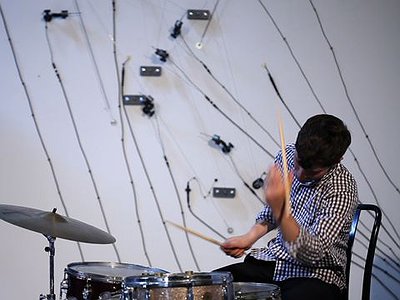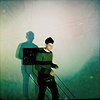Do you feel it important that an audience is able to deduct the processes and ideas behind a work purely on the basis of the music? If so, how do you make them transparent?
I think that people get what they get out of something. You can't generalise about an audience, everyone comes in with their own ideas and expectations for what music looks and sounds like. I try to get to the core of a thing and feel my way through it. If it feels like it's working on an intuitive level for me, I have to assume everyone's instincts kick in as well. I think deduction comes from curiosity, and curiosity stems from something instinctual. This is when it seems to succeed for me.
In how much, do you feel, are creative decisions shaped by cultural differences – and in how much, vice versa, is the perception of sound influenced by cultural differences?
We are completely affected by the culture that surrounds us. Even across the United States the variation of interpretation is drastic. Politics and culture play into all of this, and are crucial in deciding how we perceive a piece.
The relationship between music and other forms of art – painting, sculpture art and cinema most importantly - has become increasingly important. How do you see this relationship yourself and in how far, do you feel, does music relate to other senses than hearing alone?
For me they are completely connected. Especially in my own work, designing installations and hearing the sounds manifest themselves from physical space to a large sonic unfolding. I approach this from both ends, since I often develop my pieces on paper, they result in both installation to sound and from score to sound, so the drawing out and mapping out of the piece effects it to the core. I also draw and paint quite a bit, so much of the sounds and images I develop are in parallel and often happen at the same time with the musical projects I'm involved in. Processes cross and blur between the different ways I work. It seems to me that if something is a good idea worth pursuing it often has multiple possibilities across different mediums.
There seem to be two fundamental tendencies in music today: On the one hand, a move towards complete virtualisation, where tracks and albums are merely released as digital files. And, on the other, an even closer union between music, artwork, packaging and physical presentation. Where do you stand between these poles?
I personally enjoy records and CD's. I also like books. I just can't concentrate as easily on digital information. With that said, for those of us that are interested in musical objectification, whatever that may mean, we need to come up with new solutions outside of traditional ideas of recordings, since its obviously not going to stay static relying on older mediums forever. It seems like the possibility for much more complex situations can emerge in the documentation of music. With recording, technology, images and objects working together to make something stronger.




